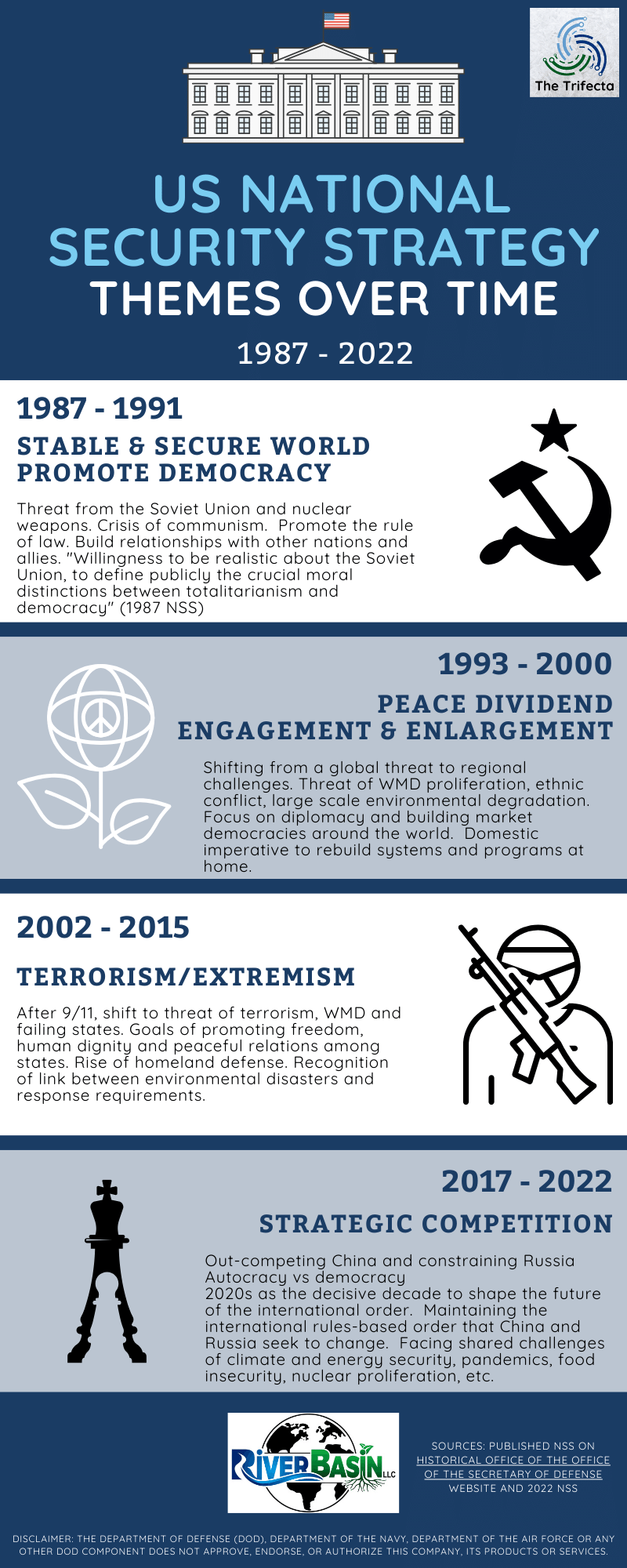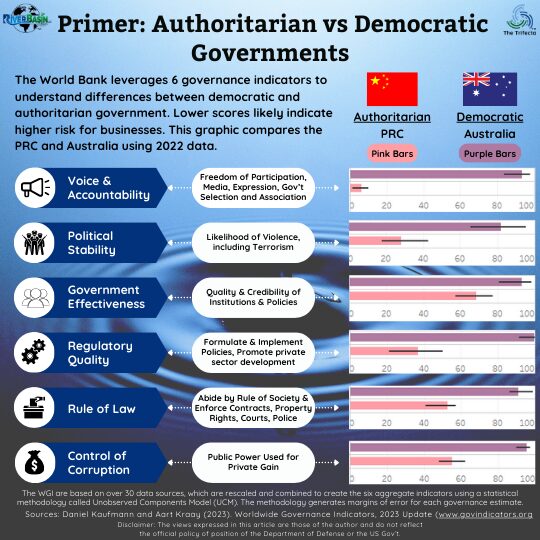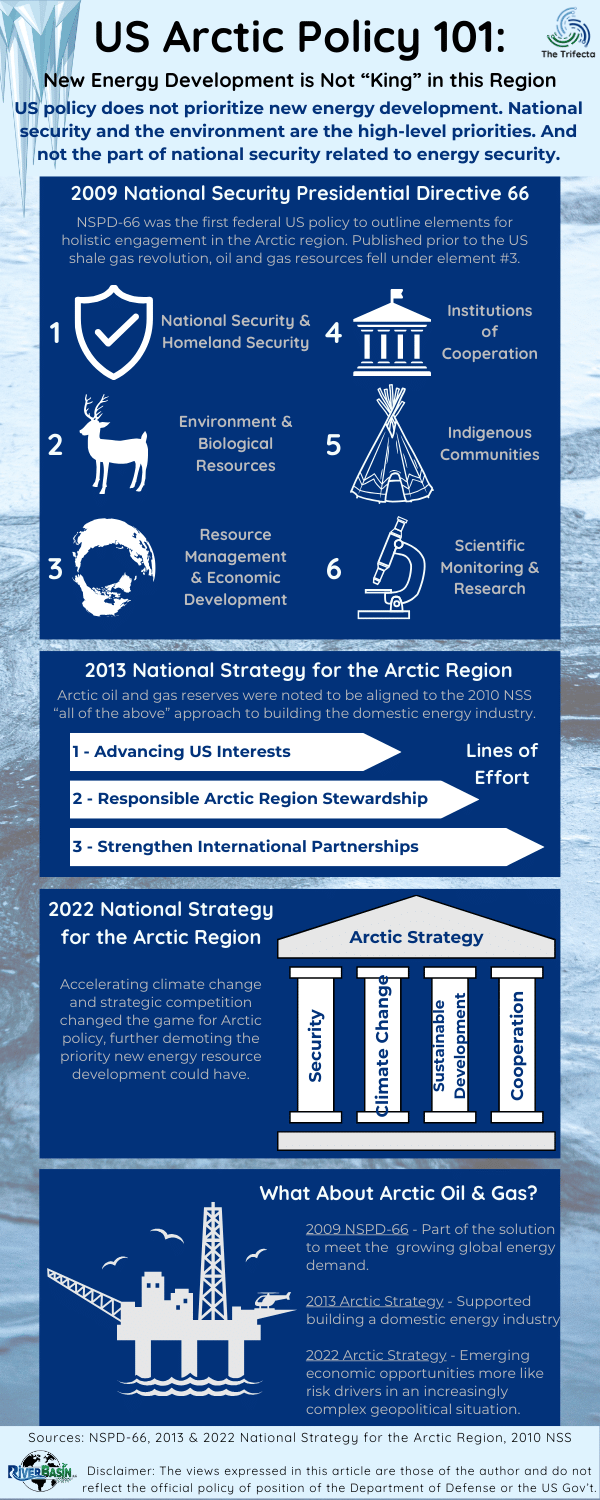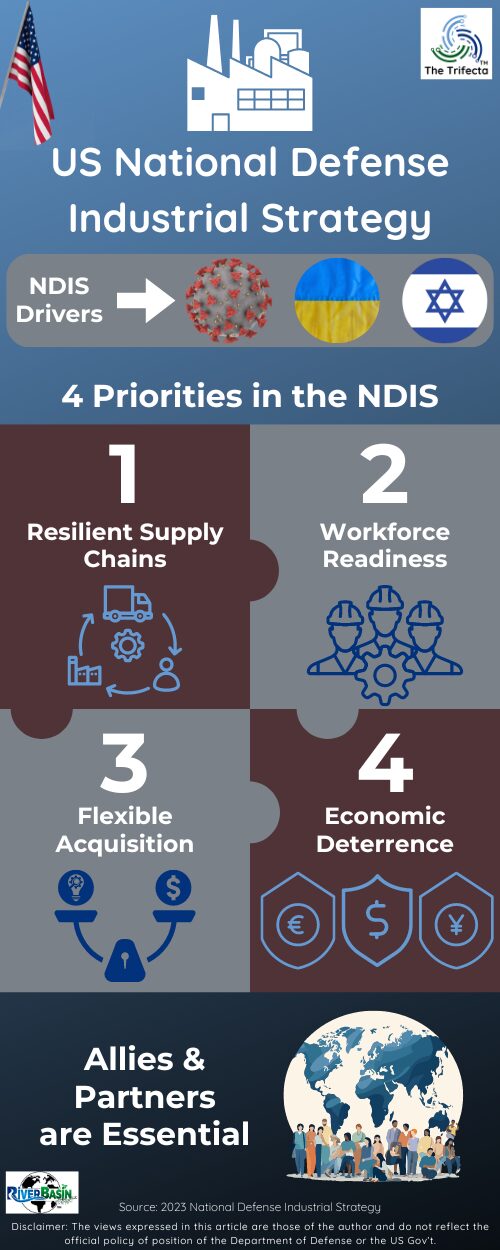
BLUF
Why does this matter?
Whether or not energy companies realize it, they play an integral role in the US government’s ability to pursue the national vision outlined in the National Security Strategy (NSS). More details and applicability are discussed in the next post, whereas this post explains foundational information for readers new to the subject.
Key Take-Aways
- Instruments of national power span across domains and are employed to pursue national security objectives.
- One common model to describe instruments of power is DIME – Diplomatic, Information, Military, Economic.
- Models incorporating additional instruments reflect the complexities of navigating international relations.
Disclaimers: The views expressed in this article are those of the author and do not reflect the official policy or position of the Department of Defense or the U.S. Government. The appearance of external hyperlinks does not constitute endorsement by the United States Department of Defense (DoD) of the linked websites. The DoD does not exercise any editorial, security or other control over the information you may find at these locations.
Instruments of national power span across domains and are employed to pursue national security objectives.
Countries employ a diverse set of tools and strategies to advance their interests on the global stage. These instruments assist countries in preserving sovereignty, safeguarding citizens, and promoting their values globally. In a competitive and interconnected world, instruments of power allow countries to negotiate, resolve conflicts, project influence, and address global challenges. By using these instruments judiciously, nations can pursue their national interests, establish diplomatic relations, and advance their strategic objectives in an ever-changing global landscape.
One common model to describe instruments of power is DIME – Diplomatic, Information, Military, Economic.
There are different ways people think about the instruments of national power. Joint Publication 1 (2017) reflected a common method called the DIME model – Diplomatic, Information, Military and Economic. Let’s explore the practical application of each aspect of this model.
- Diplomatic – International partnerships and alliances are examples of diplomatic efforts to foster cooperation, resolve conflicts and build goodwill. Countries employ skilled diplomats, sign treaties, and hold dialogues to shape foreign policy, promote stability, and address global challenges.
- Information – Sharing and controlling information is used to influence perceptions, opinions, and decisions. Countries employ this instrument to shape narratives, gain soft power, and safeguard their interests, both domestically and internationally.
- Military – A country’s armed forces, technology, and strategies are employed to protect their sovereignty, deter aggression, strengthen alliances, and respond to security threats. The goal is to safeguard a country’s interests, maintain national security, and project influence in international affairs.
- Economic – Multiple tools are used to promote financial interests. For example, trade policies, foreign aid, investments, or sanctions are all used to promote prosperity, exert influence, or coerce other countries.
Models incorporating additional instruments reflect the complexities of navigating international relations.
In 2018, the Joint Chiefs of Staff published Joint Doctrine Note 1-18. This guidance document proposed “MIDFIELD” as a more comprehensive model to supersede DIME. MIDFIELD stands for – military, informational, diplomatic, financial, intelligence, economic, law, and development.
The same year, the 2018 National Defense Strategy summary included financial, intelligence, and law enforcement as elements of power. Together with DIME, this created the new acronym DIME-FIL. MIDFIELD is distinguished from DIME-FIL by including “development.” To simplify matters, we will use DIME-FIL. The financial, intelligence and law enforcement instruments of power can be thought of as:
Financial
This instrument is more tactical than the Economic instrument described above. All organizations rely on money to operate. The financial instrument of power is a way to prevent individuals or groups from accessing the sources of funding, support systems, or networks upon which they depend for operations.
Intelligence
The fundamental purpose of intelligence is to provide decision advantage to policy makers and military commanders. Eighteen intelligence community organizations leverage different types of intelligence to pursue this goal.
Law Enforcement
This is a complex instrument. These authors defined it as, “understanding and adherence to national, international, and local laws and the activities to support or carry out the enforcement of those laws and thereby restore order.” Particularly in the era of Strategic Competition, this instrument can be more prominent. Russia and the PRC actively challenge the rules-based international order. Actions by other nations to reinforce the rules-based international order would fall partially under this instrument of power.
Related, some readers may be familiar with the PMESII model. PMESII stands for political, military, economic, social, information, and infrastructure. Though related to DIME/DIME-FIL, there is a nuanced distinction. DIME/DIME-FIL refers to actions taken and PMESII refers to the effects those actions have.
Instruments of power span across domains.
They encompass various tactics and resources used to influence international relations, achieve foreign policy goals, and safeguard national interests. When the President outlines his vision in the National Security Strategy, these instruments of power are the primary levers by which the government pursues strategy execution.

Think About It...
- Who in your organization is familiar with the instruments of national power?
- How is your business affected by tools such as treaties or sanctions between governments?
- How do other countries’ actions influence your business operations or investment decisions?
- When do your business operations intersect with government activities?
DOPSR 24-P-0146




